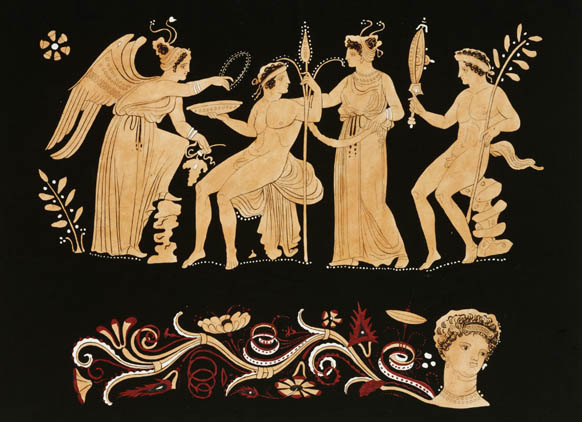
IRIS login | Reed College home Volume 90, No. 1: March 2011
Classic Lectures
What Hum 110 Is All About

By Prof. Peter Steinberger
I’ll be returning to Hum 110 next year after a long hiatus. During my time as dean, I taught one or another course every year, but always in political science, never in Hum. I love teaching political philosophy, but I also love Hum 110. So I’m absolutely thrilled to get back in the course—especially now, with its terrific new syllabus.
I do have one regret, however, and that’s the absence of a number of wonderful Hum lectures that are no longer part of the course. I miss those lectures. They brought astonishing insight and erudition to the difficult and challenging materials of the ancient world; and it was with that in mind that I first proposed the publication of some of the best of them. I’m delighted that this will now finally occur as part of Reed’s 100th birthday. Three superb lectures will be published in subsequent editions of Reed, and I’m honored to have the opportunity to offer here a general introduction to the series.
Hum 110: A Primer
Since 1943, Humanities 110—or Introduction to Western Humanities—has been the foundation of the Reed College curriculum. As most of you know, Hum 110 is an intensive, year-long course required of all first-year students. The basic principles of the course, and a significant portion of the actual syllabus, have remained largely unchanged over time. For over 60 years, students in Hum 110 have engaged in the study of archaic and classical Greece, focusing on Homer, Hesiod, the lyric poets, the plastic arts (including vase painting, sculpture and architecture), Herodotus, Thucydides, Aeschylus, Sophocles, Euripides, Aristophanes, the pre-Socratics, Plato, and Aristotle. Of course, the syllabus has always also included substantial non-Greek materials, but those materials have changed over time. Most recently, and up until this year, the spring semester was devoted to the study of imperial Rome and Rome’s encounter with its eastern periphery, roughly from Augustus to Augustine.
Traditionally, the goals of Hum 110 have been several: to introduce students to serious college-level work, to introduce them to Reed’s distinctive approach to teaching, and to provide an opportunity for rigorous writing instruction. Perhaps most importantly, Hum 110 seeks to introduce students in a systematic way to the various disciplines—history, literature, philosophy, aesthetics, social science—of which the liberal arts are composed.
The course also serves important sociological functions. All first-year students at Reed are reading the same thing at the same time. When it’s Herodotus week, for example, the campus is awash in copies of the Histories; this kind of curricular uniformity has proved to be invaluable in creating a strong sense of intellectual community. For many first-year Reedies, Hum 110 is a powerful common experience, perhaps more so than any of their other experiences, academic and nonacademic alike. Thus, one frequently hears Reed freshmen fervently discussing yesterday’s lecture or tomorrow’s reading not just in the classroom but in the dining hall, the locker room, the dormitory, and elsewhere across campus. Moreover, the persistence of the course over time has created powerful connections across cohorts, since many generations of Reed College alumni have read, and at least to some extent have remembered, the very same texts.


LATEST COMMENTS
steve-jobs-1976 I knew Steve Jobs when he was on the second floor of Quincy. (Fall...
Utnapishtim - 2 weeks ago
Prof. Mason Drukman [political science 1964–70] This is gold, pure gold. God bless, Prof. Drukman.
puredog - 1 month ago
virginia-davis-1965 Such a good friend & compatriot in the day of Satyricon...
czarchasm - 4 months ago
John Peara Baba 1990 John died of a broken heart from losing his mom and then his...
kodachrome - 7 months ago
Carol Sawyer 1962 Who wrote this obit? I'm writing something about Carol Sawyer...
MsLaurie Pepper - 8 months ago
William W. Wissman MAT 1969 ...and THREE sisters. Sabra, the oldest, Mary, the middle, and...
riclf - 10 months ago